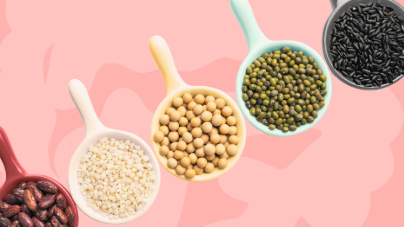Consuming extra fiber, which is present in fruits, vegetables, and whole grains, may help shield the body against harmful microorganisms.
The study, which was published this month in Nature Microbiology, found that individuals who had high levels of a particular type of beneficial bacteria called Faecalibacterium were more likely to have low levels of potentially deadly bacteria like E. coli. The researchers analyzed samples from the gut microbiomes of over 12,000 people from 45 different countries.
Additionally, the researchers discovered that samples with high concentrations of Faecalibacterium also included significant concentrations of short-chain fatty acids, which are advantageous substances that are produced as a consequence of fiber breakdown. Reduced levels of this type of bacteria have been associated to gastrointestinal or inflammatory bowel disorders, according to research.
The study’s principal investigator, Alexandre Almeida, a research fellow at Cambridge University, told NBC News via email, “The main takeaway from our study is that our gut microbiome plays an important role in reducing the growth of potentially harmful bacteria in our gut, and it seems this effect may be modulated through diet.”
The group of bacteria, fungi, and viruses that live in the gastrointestinal system is known as the gut microbiome. Every individual has a different gut microbiota.
According to the latest research, consuming foods high in fiber, such grains, beans, and vegetables, may help ward against dangerous germs, he continued.
The latest study, Almeida warned, did not demonstrate that fiber offers protection from dangerous microorganisms. “We must keep in mind that the majority of our findings are based on associations, as this was an observational study conducted on people’s gut microbiomes at one particular time,” he added. This indicates that further research is required to determine if specific nutrients, such as fiber, might reduce the risk of infections over an extended period of time.
The scientists examined the bacterial composition of 12,238 individuals using feces samples from 65 investigations conducted in 45 countries. They discovered that a person’s gut’s likelihood of becoming overrun with dangerous bacteria may be predicted based on the makeup of their microbiome.
Dr. Walter Willett, a professor of epidemiology and nutrition at the Harvard T.H. Chan School of Public Health and a professor of medicine at Harvard Medical School in Boston, remarked, “This is an impressive analysis,” but he pointed out that it doesn’t demonstrate that fiber influences a person’s vulnerability to dangerous bacteria. It’s a single, little component of the puzzle. It will be crucial in the future to incorporate nutrition into the analysis.
According to Willett, there are several other justifications for consuming the recommended levels of fiber. “There is very strong evidence that fiber helps prevent cardiovascular disease, diabetes, and weight loss.”
According to Willett, adults require 30 grams of fiber daily. According to statistics from the U.S. Department of Agriculture, the majority of Americans only receive around 58% of that daily amount.
“But counting out the grams isn’t practical,” Willett said. “The easiest thing is to abide by a few guidelines: Eat a range of fruits and vegetables and always make sure your grains are whole grains. That alone will provide you with a lot of fiber. Fiber content is very high in some meals.
For instance:
Toasted oat cereal (3 g per cup) compared unsweetened bran cereal (14 g per ½ cup)
Compared to asparagus (2.9 g per cup), lima beans (13.2 g per cup)
Hazelnuts (2.8 g per ounce) against pumpkin seeds (5.2 g per ounce)
Compared to blueberries (3.6 g per cup), raspberries (8 g per cup)
Dr. Daniel Freedberg, a gastroenterologist and associate professor of medicine and epidemiology at Columbia University Vagelos College of Physicians and Surgeons in New York City, stated, “This study does not show that eating more fiber will lead to the production of more beneficial bacteria.” “However, a lot of evidence points to the fact that we do consume insufficient amounts of fiber.”
Those who don’t get enough fiber would undoubtedly benefit from increasing their intake. “Fibre is the only thing that is good for both constipation and diarrhea, which are gastrointestinal conditions that I see people with,” Freedberg stated. He said that eating a lot of fiber might help protect the colon.
According to Freedberg, “there are some studies where people were briefly randomized to consume an ultraprocessed diet or a very, very high-fiber diet.” “You can see unfavorable changes in the colon tissues of those who consumed the ultraprocessed food in their biopsies.”





